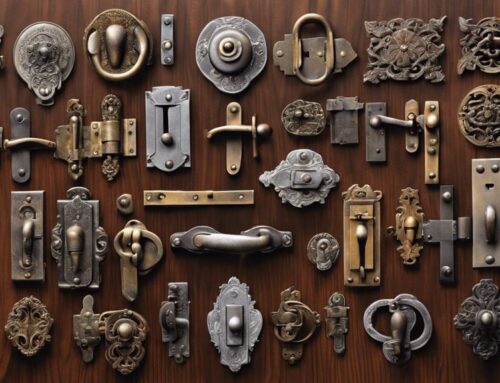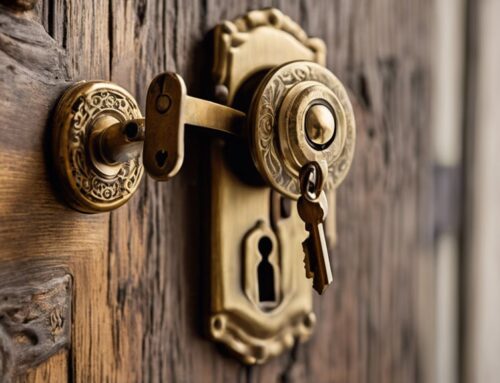When it comes to securing your space, electromagnetic locks present a compelling option that combines technology and reliability. You’ll find these high-security solutions feature a design that makes them resistant to tampering, seamlessly integrating with various access control systems. However, before deciding if they’re right for your needs, it’s crucial to explore their advantages, disadvantages, and installation requirements. You’ll soon realize that understanding the nuances of electromagnetic locks can impact your security strategy considerably—so what’s the best approach to guarantee you get the most out of them?
Key Takeaways
- Electromagnetic locks provide robust security by utilizing a strong magnetic force that secures doors against unauthorized access.
- Available in surface-mounted and embedded types, they cater to various installation preferences and security needs.
- Key features include anti-tamper alarms and fail-safe mechanisms that ensure safety during power outages.
- Regular maintenance is vital for optimal performance, including checking wiring and testing functionality.
- They integrate seamlessly with access control systems, offering versatility and enhanced management of security protocols.
Overview of Electromagnetic Locks

Electromagnetic locks, often referred to as mag locks, provide a robust security solution through the principle of magnetism.
These locks consist of an electromagnet and an armature plate; when current flows through the electromagnet, a strong magnetic field pulls the armature into place, securely locking the door. This design allows for seamless access control, ensuring that only authorized individuals can gain entry.
You can integrate mag locks with various access control systems, including keypads, card readers, and biometric scanners. Unlike traditional locks, they don’t have moving parts, which reduces mechanical failure risks.
Additionally, mag locks can be monitored remotely, providing real-time status updates. Understanding these mechanisms enables you to implement effective security measures tailored to your environment.
Types and Applications

While many security solutions exist, choosing the right type of electromagnetic lock is essential for your specific application. Electromagnetic locks primarily fall into two categories: surface-mounted and embedded.
Surface-mounted locks attach directly to the door frame and are suitable for most standard installations. Embedded locks, on the other hand, fit into door frames, providing a more discreet option and enhanced aesthetics.
Applications vary widely. You’ll find surface-mounted locks commonly used in retail environments, while embedded designs are ideal for high-traffic areas needing a sleek appearance.
Additional considerations include weight capacity and voltage requirements, as these factors affect performance. Always assess your security needs and environmental conditions before making a decision, ensuring optimal performance and reliability in your chosen solution.
Security Features

When selecting an electromagnetic lock, it’s crucial to take into account the various security features that enhance safety and protection.
Look for locks equipped with anti-tamper alarms, which provide immediate alerts if unauthorized access is attempted. Ascertain the system includes a fail-safe mechanism; this guarantees the lock releases during a power failure, allowing for safe egress in emergencies.
Advanced models may offer biometric access options or key fob compatibility for added convenience and security. For instance, some locks, like the Ardwolf A20(1), provide multiple access methods to ensure flexibility. Additionally, consider the lock’s holding force, as higher ratings correspond to stronger resistance against forced entry.
Finally, choose locks integrated with access control systems for centralized management and enhanced monitoring capabilities, allowing you to maintain complete oversight of your security environment. Understanding the various types of deadbolts can also aid in making informed decisions regarding your overall security strategy.
Installation and Maintenance

Proper installation and maintenance of electromagnetic locks are essential to confirm their ideal performance and longevity.
Begin installation by verifying that the door frame and surface are free of obstructions, enabling proper alignment between the lock and armature plate. Use appropriate fasteners and a drill to securely mount the electromagnet, while adhering to manufacturer’s specifications for power supply connections.
Regular maintenance involves inspecting wiring and connections for wear or corrosion, as well as testing the lock’s functionality to confirm it engages and disengages correctly. Additionally, implementing regular checks on essential tools used for lock maintenance can help identify potential issues early.
Cleaning the surface regularly prevents dust and debris buildup, which may hinder operation.
Advantages and Disadvantages

Electromagnetic locks offer several advantages that make them a popular choice for securing entry points. Their primary benefits include superior strength and resistance to tampering, providing you with heightened security. Additionally, they often feature hardened steel bolts, enhancing their resistance to physical attacks.
They’re simple to integrate into existing security systems, allowing for versatile applications. Additionally, they require minimal physical contact, promoting durability and reducing wear.
However, these locks also present disadvantages. They rely heavily on a continuous power supply; any power failure could compromise security.
Their cost can be higher than traditional locks, which may be a consideration for budget-conscious projects. Finally, installation complexity might necessitate professional assistance, adding to initial expenses.
When compared to high-security locks, electromagnetic locks may offer different advantages, particularly in resistance to tampering(1) and integration capabilities, but it is crucial to evaluate their limitations as well.
Balancing these factors is essential when deciding on your locking solutions.
Frequently Asked Questions
How Do Electromagnetic Locks Compare to Traditional Locks in Security?
When comparing electromagnetic locks to traditional locks, you’ll find that electromagnetic locks offer superior security.
Their design eliminates physical keys and relies on electric current for locking mechanisms, making them harder to pick or tamper with.
Unlike traditional locks, which can be compromised by brute force, electromagnetic locks maintain a strong hold until power is cut.
This feature makes them ideal for high-security areas where unauthorized access must be strictly controlled.
Can Electromagnetic Locks Be Used Outdoors?
Did you know that nearly 30% of property crime involves unauthorized entry?
If you’re considering outdoor use for electromagnetic locks, they’ve got potential, but you need to guarantee they’re weather-resistant. Choose models specifically designed for exterior applications, as moisture and temperature variations can compromise performance.
Be mindful of installation factors, like proper mounting and shielding from direct elements, to maintain security integrity and longevity. Always consult manufacturer specifications for the best results.
What Happens if the Power Supply Is Interrupted?
If the power supply is interrupted to an electromagnetic lock, it’ll release its hold, allowing easy access.
This lack of power means the locking mechanism can’t maintain the magnetic field necessary for secure closure.
It’s essential to have alternative security measures in place, like backup batteries or mechanical locks, to guarantee protection during power outages.
You should regularly check these systems to maintain ideal functionality and security for your premises.
Are Electromagnetic Locks Compatible With Smart Home Systems?
Yes, electromagnetic locks can be compatible with smart home systems.
To ascertain seamless integration, you’ll need to select locks that feature smart technology or can be connected to a smart hub. Compatibility often depends on the protocols used, such as Z-Wave or Wi-Fi.
By configuring your smart home system correctly, you can control the locks remotely, enhancing security while maintaining convenience.
Always verify specifications before installation to confirm proper functionality.
How Do Electromagnetic Locks Perform in Extreme Weather Conditions?
When the weather’s acting like a throwback to the Ice Age, you’ll want to know how electromagnetic locks hold up.
Generally, they perform reliably in extreme temperatures, but humidity and moisture can impact their functionality.
If you’re in an area prone to harsh conditions, consider options with weatherproofing features.
Regular maintenance can also guarantee that debris and ice don’t hinder their operation, keeping your security uncompromised even in the elements.
Conclusion
To summarize, electromagnetic locks are an impressive high-security option, especially considering that they can withstand up to 1,200 pounds of force, making them incredibly resilient against unauthorized access. As you weigh the pros and cons, remember their reliability and advanced security features can greatly enhance your protection strategy, but you’ll need to guarantee a stable power supply. With professional installation and regular maintenance, these locks can serve as a formidable defense for your property.







